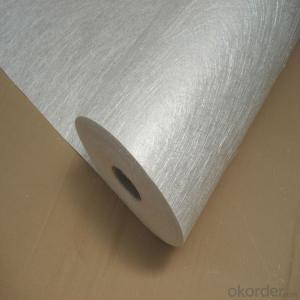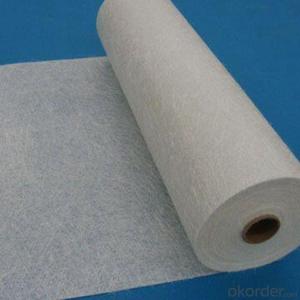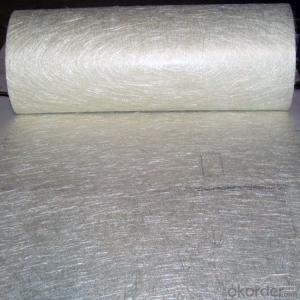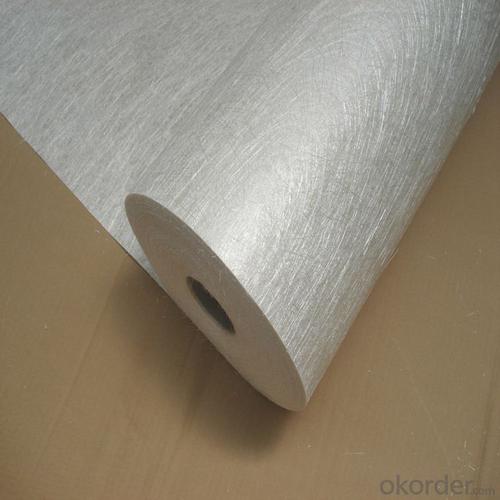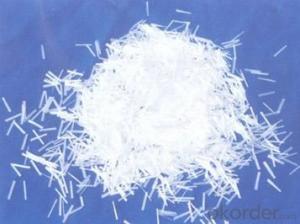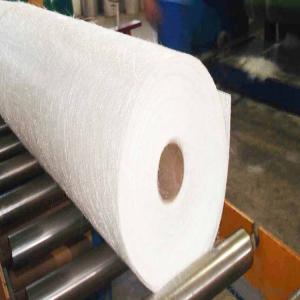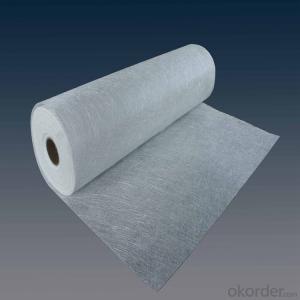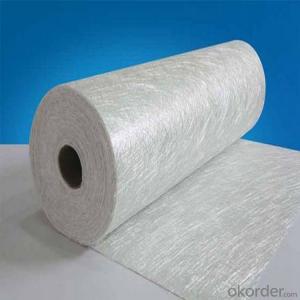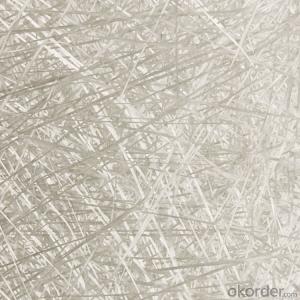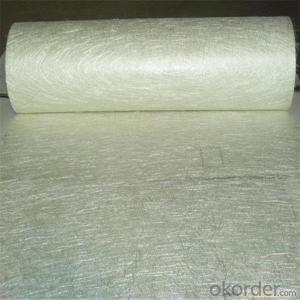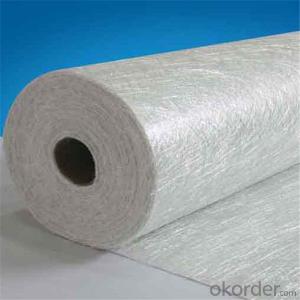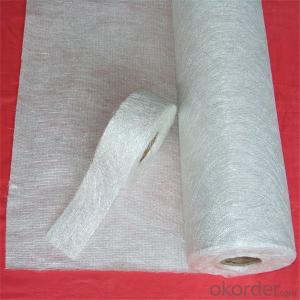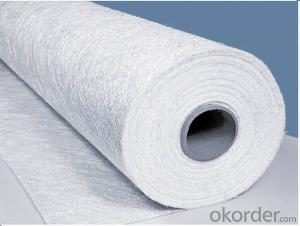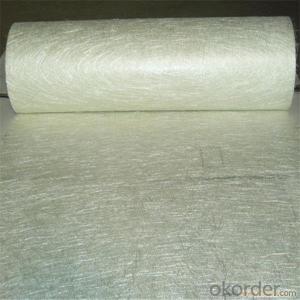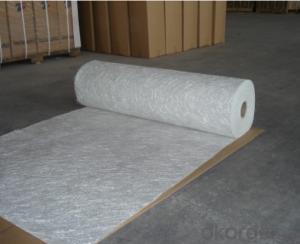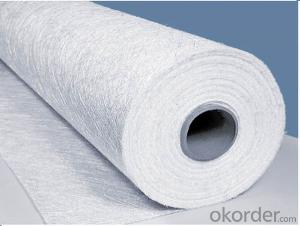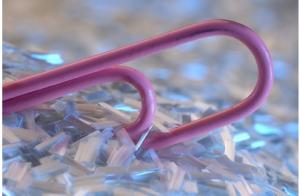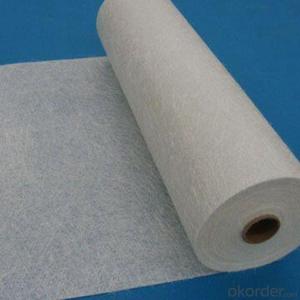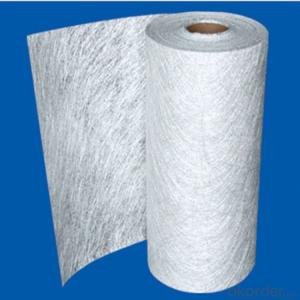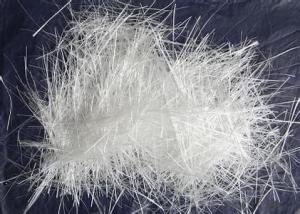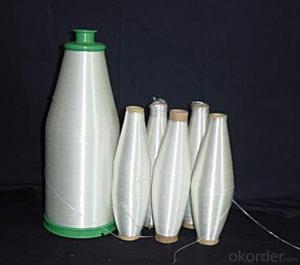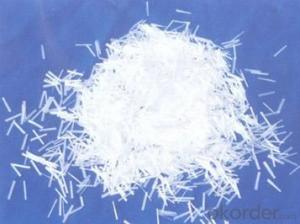Powder Fiberglass Chopped Strand Mat
- Loading Port:
- China main port
- Payment Terms:
- TT OR LC
- Min Order Qty:
- 1 kg
- Supply Capability:
- 5000 kg/month
OKorder Service Pledge
OKorder Financial Service
You Might Also Like
Product Description:
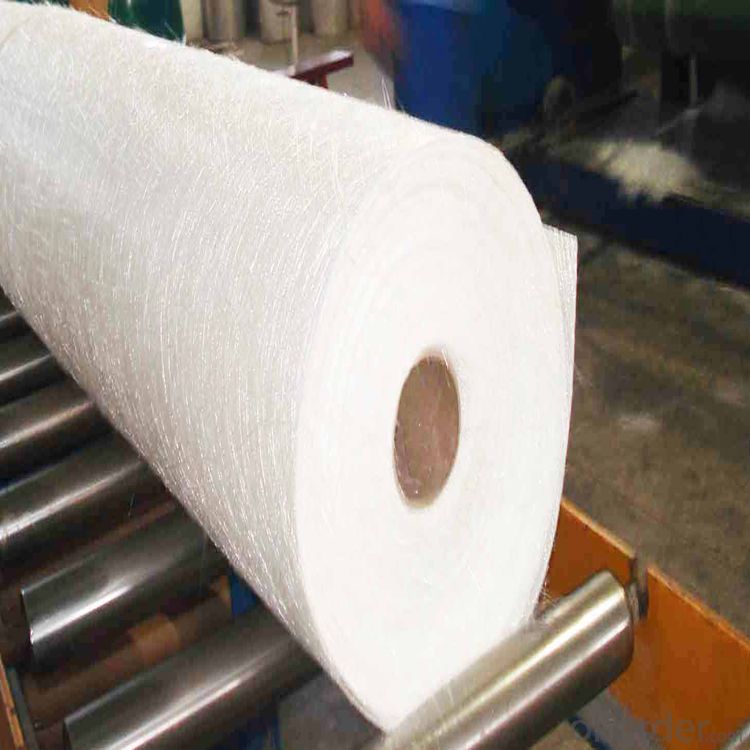
Surfacing Tissue mainly used in the surface layers of FRP products. It features even Fiber distribution, soft feel, level and smooth fiber surface, less glue content, quick resin soak and good pattern fitness. It can improve the product surface property on corrosion resistance, compressive strength, seepage resistance, and longer service life. It is also suitable for spraying; pattern pressing and other FRP pattern technology.
Surfacing Tissue mainly used in the surface layers of FRP products. It features even Fiber distribution, soft feel, level and smooth fiber surface, less glue content, quick resin soak and good pattern fitness. It can improve the product surface property on corrosion resistance, compressive strength, seepage resistance, and longer service life. It is also suitable for spraying; pattern pressing and other FRP pattern technology.
Product Features:
Fast breakdown in styrene
Fiber dispersed evenly
Low binder content
Superior acid corrosion resistance
Specifications:
Item | Over Density | Moisture Content | Chop Density | Polyester Yarn | Width |
(g/m2) | (%) | (g/m2) | (g/m2) | (mm) | |
EMK300 | 309.5 | ≤0.15 | 300 | 9.5 | 50-3300 |
EMK380 | 399 | 380 | 19 | ||
EMK450 | 459.5 | 450 | 9.5 | ||
EMK450 | 469 | 450 | 19 | ||
EMC0020 | 620.9 | 601.9 | 19 | ||
EMC0030 | 909.5 | 900 | 9.5 |
Product Packaging:
Each Surface Tissue is wound onto a paper tube which has an inside diameter of 76mm and the mat roll has a diameter of 330mm. The mat roll is wrapped up with plastic film,and then packed in a cardboard box or wrapped up with kraft paper. The rolls can be vertically or horizontally placed. For transportation, the rolls can be loaded into a cantainer directly or on pallets.
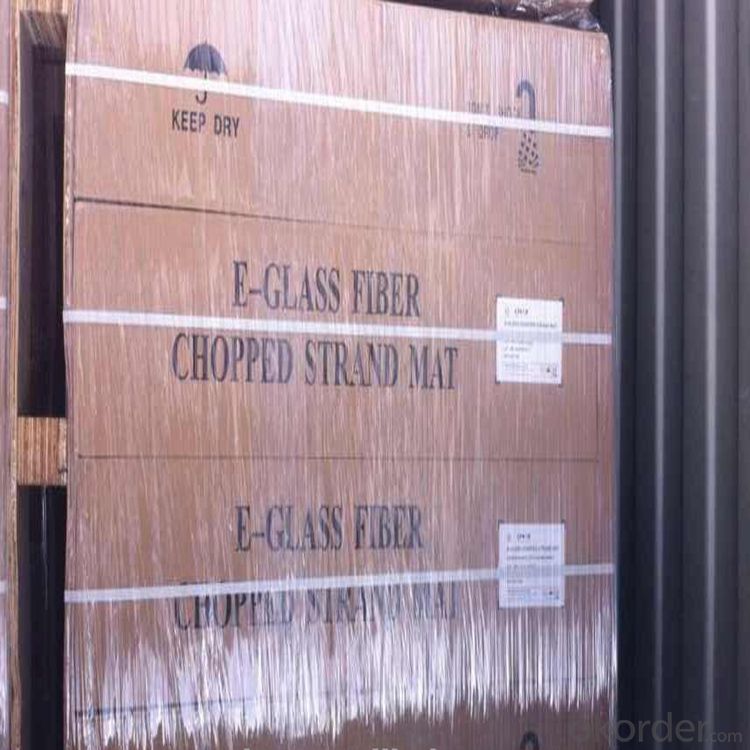
Product Storage:
Unless otherwise specified, Chopped Strand Mat should be stored in a dry, cool and rain-proof area. It is recommended that the room temperature and humidity should be always maintained at 15℃~35℃ and 50%~75% respectively.
Company Information
CNBM (China National Building Material) Group is the largest comprehensive building materials group in China that in integrate scientific research, manufacturing and logistics into one entity. The largest building materials and equipment specialists in China. Upon State Council approval, today CNBM owned more than 300 subordinate manufacturing factories and servicing companies. There are 6 fully owned public listed companies and 11 partially owned with substantial shares public listed companies. In many of these fields, CNBM is playing the leading role in the building industry in the country.
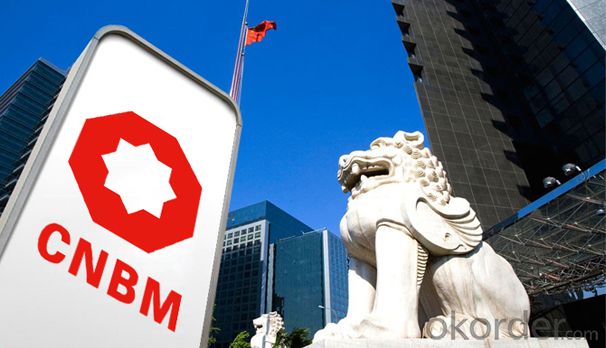
- Q: How does the length of the fiberglass chopped strand affect its performance?
- The performance of fiberglass chopped strand is significantly influenced by its length. In general, shorter strands yield better mechanical properties, including tensile strength, impact resistance, and dimensional stability. This is because shorter strands have the ability to disperse more evenly within the resin matrix, resulting in a higher ratio of fiber to resin and improved load transfer between the fibers. Furthermore, shorter strands facilitate better wet-out and impregnation of the resin, leading to enhanced adhesion and bonding between the fibers and the matrix. Consequently, this elevates the overall strength and stiffness of the composite material. On the contrary, longer strands are often more cost-effective and easier to handle during the processing stage. However, they may not offer the same level of mechanical properties as shorter strands. Additionally, longer strands can cause increased fiber entanglement and difficulties in achieving uniform fiber dispersion. In specific scenarios where flexibility or impact resistance is of utmost importance, longer strands may be preferred. Nevertheless, for the majority of structural or load-bearing applications, shorter strands are typically more advantageous due to their superior performance characteristics.
- Q: What are the packaging options for fiberglass chopped strand?
- When it comes to packaging options for fiberglass chopped strand, there are several choices available to suit different needs and preferences. One common packaging option is bulk packaging, where the chopped strand is delivered in large quantities. This is often done through bulk bags or super sacks, which can hold several hundred to several thousand pounds of chopped strand. Bulk packaging is convenient for customers who require large volumes of fiberglass chopped strand and have the necessary equipment to handle and store it. Another packaging option is paper bags or small sacks. These are typically used for smaller quantities of chopped strand and are more suitable for customers who do not require large volumes or do not have the facilities to handle bulk packaging. Paper bags or small sacks are easy to handle and can be stacked or stored on shelves. Some manufacturers also offer custom packaging options, where the chopped strand can be packaged according to specific requirements. This can include packaging in different types of bags or containers, such as plastic drums or cardboard boxes, depending on the customer's preferences. In addition to the packaging options, it is important to consider the proper labeling and marking of the packages. Clear and accurate labeling helps in identifying the type of fiberglass chopped strand, its specifications, and any safety precautions or handling instructions that need to be followed. Ultimately, the choice of packaging option for fiberglass chopped strand depends on the customer's needs, volume requirements, and storage capabilities. Manufacturers and suppliers typically offer a range of options to accommodate different preferences and ensure the safe and efficient delivery of the product.
- Q: What are the advantages of using fiberglass chopped strand?
- There are several advantages of using fiberglass chopped strand in various applications. Firstly, fiberglass chopped strand offers excellent strength and durability. The strands of fiberglass are highly resistant to breakage and can withstand high levels of stress and strain. This makes it particularly suitable for use in products and structures that require a high level of strength, such as automobile parts, boat hulls, and pipes. Secondly, fiberglass chopped strand is lightweight. Compared to other materials such as steel or aluminum, fiberglass is significantly lighter. This makes it easier to handle and transport, reducing the overall weight of the final product or structure. The lightweight nature of fiberglass also contributes to improved fuel efficiency in applications such as automotive and aerospace industries. Furthermore, fiberglass chopped strand is highly resistant to corrosion. Unlike metals that can rust or corrode over time, fiberglass is impervious to water, chemicals, and other corrosive substances. This makes it an ideal choice for applications exposed to harsh environmental conditions or chemicals, such as chemical storage tanks or offshore oil platforms. Another advantage of using fiberglass chopped strand is its versatility. Fiberglass can be molded into various shapes and forms, allowing for intricate designs and customization. It can be easily combined with other materials, such as resins, to create composite materials that offer enhanced properties and performance. This versatility makes fiberglass suitable for a wide range of industries and applications, from construction to electronics. Lastly, fiberglass chopped strand is an affordable material option. Compared to other high-strength materials, such as carbon fiber, fiberglass is generally more cost-effective. It offers a good balance between cost and performance, making it a popular choice for manufacturers and builders looking for a reliable and economical material. In summary, the advantages of using fiberglass chopped strand include its high strength and durability, lightweight nature, corrosion resistance, versatility, and affordability. These qualities make it a preferred material in various industries and applications, providing numerous benefits to manufacturers and end-users alike.
- Q: What are the adhesion properties of fiberglass chopped strand?
- The adhesion properties of fiberglass chopped strand refer to its ability to adhere to various resin systems or matrices. The strands are typically coated with a sizing material that enhances their compatibility with resins, ensuring a strong bond between the fiberglass and the resin. This adhesion is crucial for the overall performance and strength of fiberglass composites in various applications.
- Q: Can fiberglass chopped strand be used in automotive interior components?
- Automotive interior components can indeed utilize fiberglass chopped strand. This versatile material presents numerous advantages for automotive applications. Notably, its lightweight nature aids in reducing overall vehicle weight and enhancing fuel efficiency. Moreover, fiberglass chopped strand exhibits exceptional strength and stiffness, rendering it suitable for structural elements like seat frames, door panels, and dashboard supports. In addition, the molding of fiberglass chopped strand into intricate shapes is easily achievable, facilitating the creation of elaborate interior designs and features. Its resistance to chemicals, heat, and UV radiation further ensures long-lasting durability within automotive environments. Furthermore, the combination of fiberglass chopped strand with other materials, such as resins, allows for the enhancement of its performance characteristics. This enables customization and optimization of material properties to meet specific requirements for automotive interior components. In conclusion, fiberglass chopped strand proves to be a viable option for automotive interior components due to its lightness, strength, moldability, and durability.
- Q: Is fiberglass chopped strand suitable for electrical insulation in high-voltage applications?
- Fiberglass chopped strand is not suitable for electrical insulation in high-voltage applications, as it may lack the necessary dielectric properties to withstand high voltages effectively. While fiberglass is commonly used for insulation in different applications, it may not be sufficient for high-voltage situations. Specialized insulation materials with superior dielectric strength and resistance to electrical breakdown are typically required for high-voltage applications. These materials are designed to prevent current flow and electrical discharge, ensuring the safety and functionality of the electrical system. Therefore, it is advisable to use insulation materials specifically designed and tested for high-voltage applications instead of relying on fiberglass chopped strand for electrical insulation in such scenarios.
- Q: Is fiberglass chopped strand suitable for renewable energy applications?
- Yes, fiberglass chopped strand is suitable for renewable energy applications. It is a lightweight and strong material that can be used in wind turbine blades, solar panel frames, and other components in renewable energy systems. It has excellent resistance to corrosion and can withstand harsh environmental conditions, making it a reliable choice for renewable energy applications.
- Q: Where can I cut short glass fiber?
- Wellav glass fiber glass fiber to shred section as an example, mainly used for reinforced thermoplastic plastic, such as plastic added to increase strength and toughness, or manufacturing of automotive insulation cotton etc..
- Q: How is fiberglass chopped strand incorporated into composite manufacturing processes?
- Fiberglass chopped strand is commonly incorporated into composite manufacturing processes through various methods such as hand layup, spray-up, and filament winding. In hand layup, the chopped strand is dispersed onto a mold or tooling surface, typically made of metal or composite material. The resin, usually thermosetting, is then manually applied over the chopped strand using a brush or roller. This process allows for precise control over the fiber orientation and resin distribution, resulting in a strong and durable composite product. Spray-up is another method where a mixture of chopped strand and resin is sprayed onto a mold surface using a chopper gun. The chopped strand and resin are combined in the gun, which cuts the strand into short lengths and simultaneously mixes it with the resin. This mixture is then sprayed onto the mold, allowing for a rapid and efficient production process. The sprayed chopped strand is evenly distributed, resulting in a high-quality composite with excellent strength and stiffness properties. Filament winding is a process commonly used for manufacturing cylindrical or tubular composite structures, such as pipes or pressure vessels. In this method, continuous strands of fiberglass are pulled through a resin bath, impregnating them with the appropriate resin. These wetted strands are then wound onto a rotating mandrel in a precise pattern, forming a composite structure with exceptional strength and durability. Overall, fiberglass chopped strand is a versatile material that can be incorporated into composite manufacturing processes using various techniques, each offering unique advantages in terms of production speed, fiber orientation control, and overall product quality.
- Q: Can fiberglass chopped strand be used in the production of furniture?
- Furniture production can indeed utilize fiberglass chopped strand. This versatile material offers strength, durability, and resistance to various environmental factors, making it suitable for furniture applications. Chairs, tables, cabinets, and other furniture pieces can benefit from the incorporation of fiberglass chopped strand, as it enhances their structural integrity and longevity. To include this material in the manufacturing process, it can be used as a reinforcement material in the resin or plastic matrix utilized for constructing the furniture. This reinforcement significantly improves the overall strength and stability of the furniture, rendering it more impact-resistant and capable of bearing heavier loads. Moreover, fiberglass chopped strand can also serve as a filler material in upholstered furniture, providing additional support and enhancing the comfort of the seating. In conclusion, fiberglass chopped strand is an invaluable material for furniture production, enhancing its performance and durability.
Send your message to us
Powder Fiberglass Chopped Strand Mat
- Loading Port:
- China main port
- Payment Terms:
- TT OR LC
- Min Order Qty:
- 1 kg
- Supply Capability:
- 5000 kg/month
OKorder Service Pledge
OKorder Financial Service
Similar products
Hot products
Hot Searches
Related keywords
